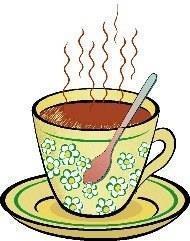
Biology, 04.11.2021 03:10, reecedstceklein
30 points and will give brainliest! (IF YOU ANSWER, ANSWER ALL OF THEM NOT SOME OF THEM)
Question 2 (5 points)
How do indicators help to observe things that are too small to see?
Question 2 options:
A. Indicators, like bromothymol blue, change color in the presence of certain molecules
B. They are used to indirectly observe molecules which are too small to see.
C. Both A and B
Question 3 (5 points)
Indicators are an indirect method of identifying the presence of certain molecules.
Question 3 options:
True
False
Question 4 (5 points)
Bromothymol blue is an indicator that turns from blue to red when carbon dioxide is added.
Question 4 options:
True
False
Question 5 (5 points)
Cells can use the glucose directly, without breaking it down, to carry out cellular processes.
Question 5 options:
True
False
Question 6 (5 points)
During cellular respiration, glucose and oxygen are broken down and converted into water, carbon dioxide, and energy in the form of ATP.
Question 6 options:
True
False
Question 7 (5 points)
In this experiment, you observed yeast in various conditions to see if a gas is produced and to determine if cellular respiration is taking place. How will you know if gas was produced?
Question 7 options:
A. A balloon placed over the container will remain uninflated.
B. A balloon placed over the container will inflate.
Question 8 (5 points)
Bromothymol blue is an indicator that turns from blue to yellow when carbon dioxide is added.
Question 8 options:
True
False
Question 9 (5 points)
One of the products of cellular respiration is carbon dioxide.
Question 9 options:
True
False
Question 10 (5 points)
Using the simulation found on slide 3 in the Investigation portion of Lesson 3.07, answer this question.
What did you observe after adding sugar to the water and running the experiment?
Question 10 options:
A. The water evaporated
B. The balloon inflated
C. The balloon did not inflate
Question 11 (5 points)
Using the simulation found on slide 3 in the Investigation portion of Lesson 3.07, answer this question.
What did you observe after adding yeast to the water and running the experiment?
Question 11 options:
A. The water evaporated
B. The balloon inflated
C. The balloon did not inflate
Question 12 (5 points)
Using the simulation found on slide 3 in the Investigation portion of Lesson 3.07, answer this question.
What did you observe after adding both sugar and yeast to the water and running the experiment?
Question 12 options:
A. The water evaporated
B. The balloon inflated
C. The balloon did not inflate
Question 13 (5 points)
Using the simulation found on slide 3 in the Investigation portion of Lesson 3.07, answer this question.
What can you determine after observing the balloon inflate?
Question 13 options:
A. A gas was produced
B. A gas was not produced
C. Nothing could be determined
Question 14 (5 points)
The first test tube in each picture is the control – and only has the water, yeast, and sugar added. The second test tube in each picture has water, yeast, and sugar plus Bromothymol blue added as an indicator. Observe the difference between the first and second photograph. What do the results tell you?
Question 14 options:
A. Carbon dioxide was produced in the first picture because the indicator did not change the color of the mixture.
B. Carbon dioxide was produced in the second picture because the indicator changed the color of the mixture.
Question 15 (5 points)
The first test tube in each picture is the control – showing water plus coloring. Additionally, the test tubes in the first picture were kept in the light. The second set of test tubes spent 24 hours in the dark. Observe the difference between the first and second photograph. What do the results tell you?
Question 15 options:
A. The plant Elodea produces carbon dioxide in the light.
B. The plant Elodea produces carbon dioxide in the dark.
C. The plant Elodea does not produce carbon dioxide.

Answers: 2
Other questions on the subject: Biology


Biology, 21.06.2019 18:40, thesleepycat
In dna, only the_ varies from one nucleotide to another. base phosphate sugar amino acid
Answers: 2

Biology, 21.06.2019 22:00, chantelporter713
What happens when the cell copies its chromosomes
Answers: 2

Biology, 22.06.2019 03:40, gghkooo1987
How can active reading strategies you? o a. they can you get into better physical shape. o b. they can you read fewer science articles. o c. they can you understand what you read. o d. they can you avoid reading altogether.
Answers: 3
Do you know the correct answer?
30 points and will give brainliest! (IF YOU ANSWER, ANSWER ALL OF THEM NOT SOME OF THEM)
Question...
Questions in other subjects:





Mathematics, 10.03.2020 01:32

History, 10.03.2020 01:32


English, 10.03.2020 01:32


Social Studies, 10.03.2020 01:32







